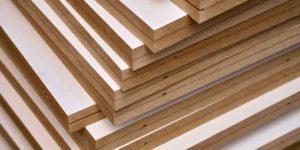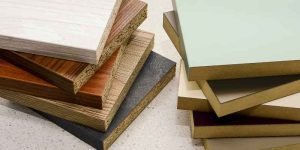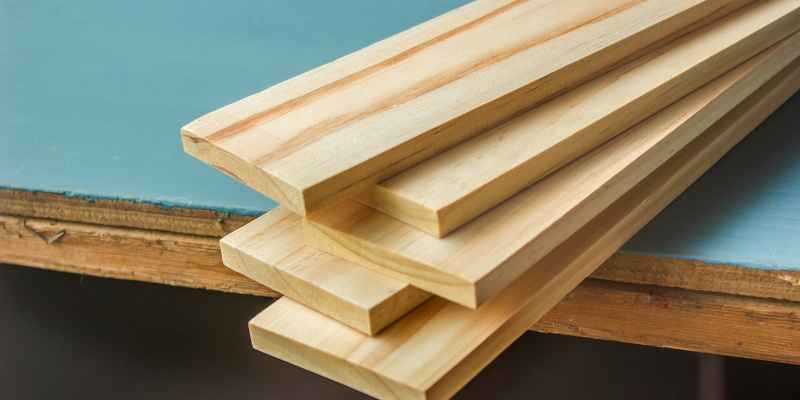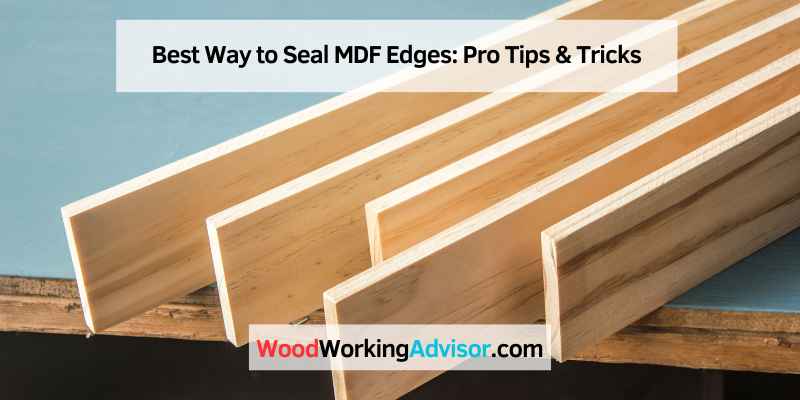To seal MDF edges effectively, use a solvent-based primer and apply multiple coats for optimal coverage. This method helps prevent moisture absorption and creates a smooth finish.
Sealing the edges ensures durability and longevity for your MDF projects. MDF, or Medium Density Fiberboard, is a popular choice for furniture and cabinetry due to its affordability and versatility. However, MDF edges are vulnerable to moisture damage if left untreated.
Sealing the edges with a solvent-based primer is crucial to protect the material and enhance its lifespan. By following the right sealing techniques, you can ensure your MDF projects maintain their quality and appearance over time.
Preparation Before Sealing
Preparation before sealing the MDF edges is crucial for achieving a smooth and flawless finish. By following the right steps, you can ensure that the edges are properly prepped for the sealing process, resulting in a professional-looking outcome.
Cleaning The Surface
Start by cleaning the MDF surface to remove any dust, dirt, or debris. Use a damp cloth or sponge to wipe down the edges thoroughly. This will help the sealant adhere better and prevent any imperfections from showing through the sealed surface.
Sanding For Smoothness
Next, sand the edges of the MDF to achieve a smooth and even surface. Begin with a coarse-grit sandpaper to remove any rough spots or imperfections. Then, switch to a finer-grit sandpaper to further smoothen the edges. Be sure to sand in the direction of the grain for the best results.
Choosing The Right Sealant
When it comes to sealing MDF edges, choosing the right sealant is crucial for achieving a professional and durable finish. With various options available, understanding the types of sealants and their pros and cons can help you make an informed decision.

Types Of Sealants
There are primarily two types of sealants commonly used for MDF edges:
- Water-Based Sealants
- Solvent-Based Sealants
Pros And Cons
| Sealant Type | Pros | Cons |
|---|---|---|
| Water-Based Sealants | Easy to clean up | May raise the grain of the MDF |
| Solvent-Based Sealants | Provides a more durable finish | Strong odor and requires proper ventilation |
Application Techniques
To achieve the best way to seal MDF edges, consider using a combination of wood glue and wood filler to fill any gaps and imperfections. After sanding the edges smooth, apply a coat of primer followed by multiple layers of paint or sealant for a durable finish.
When it comes to sealing MDF edges, the application technique plays a crucial role in achieving a smooth and durable finish. In this section, we’ll discuss the two most popular application techniques: brush and spray, and the importance of applying the sealant evenly.
Brush Vs. Spray
The choice between brush and spray application technique depends on personal preference and the project’s scale. Here are some pros and cons of each method:
| Brush | Spray |
|---|---|
| Easy to control the amount of sealant applied | Quick and efficient for large projects |
| Requires more time and effort for an even finish | May cause overspray and waste of sealant |
| More suitable for small projects or hard-to-reach areas | May require additional safety precautions due to fumes |
Applying Evenly
Regardless of the application technique, it’s essential to apply the sealant evenly to avoid drips, bubbles, or uneven finish. Here are some tips to achieve an even application:
- Use a sandpaper to smooth the edges before applying the sealant.
- Stir the sealant thoroughly before use to ensure consistency.
- Apply the sealant in thin coats, allowing each layer to dry completely before adding another.
- Use a brush or roller with smooth and even strokes to avoid bubbles and drips.
- Wipe away any excess sealant with a cloth or brush.
By following these tips and choosing the right application technique for your project, you can achieve a smooth and durable finish for your MDF edges.
Drying And Curing
Sealing MDF edges is crucial for preventing moisture damage and ensuring durability. The best way to achieve this is by using a combination of primer and paint, which creates a protective barrier against moisture and enhances the appearance of the edges.
This method ensures long-lasting and professional-looking results.
Ideal Conditions
Drying and curing MDF edges require proper environment.
Time Frames
Understanding the ideal timeframe is crucial.
To seal MDF edges effectively, ideal conditions are necessary. Ensure the environment is dry and well-ventilated. Avoid sealing in high humidity to prevent issues.
Time frames for drying and curing vary. Allow adequate time for each coat to dry completely. Patience is key to achieving a smooth finish.
| Condition | Details |
|---|---|
| Temperature | Around 70°F is ideal |
| Humidity | Avoid high humidity levels |
- Avoid sealing in high humidity
- Ensure proper ventilation during drying
Proper drying and curing times are crucial. Allow each coat to dry completely before applying the next. Rushing this process can lead to imperfect sealing.
- Apply first coat and let it dry
- Apply subsequent coats as needed
Sanding Between Coats
If you want to achieve a smooth and even finish on your MDF edges, sanding between coats is a crucial step in the sealing process. Not only does it help to remove any rough spots or imperfections, but it also ensures that each layer of sealant adheres properly to the MDF surface, resulting in a durable and long-lasting finish.
Why It’s Necessary
The main reason why sanding between coats is necessary when sealing MDF edges is that it helps to create a smooth and even surface. MDF is a porous material, which means that it can absorb moisture and expand or contract over time. By sanding between coats, you can remove any rough spots or raised fibers that might cause the sealant to be unevenly applied, resulting in a more even and consistent finish.
How To Do It Properly
To sand between coats properly, you’ll need to use a fine-grit sandpaper (around 220 grit should be sufficient). Start by wiping down the MDF surface with a damp cloth to remove any dust or debris. Then, use the sandpaper to lightly sand the surface of the sealant, being careful not to press too hard or sand too aggressively. Once you’ve sanded the entire surface, wipe it down again with a clean, damp cloth to remove any remaining dust or debris. Repeat this process between each coat of sealant until you’ve achieved the desired level of smoothness and consistency.
It’s important to note that sanding between coats can be a time-consuming process, but it’s well worth the effort if you want to achieve a high-quality finish on your MDF edges. By taking the time to sand between coats, you’ll be able to ensure that each layer of sealant is properly applied and that your MDF edges will be protected from moisture, scratches, and other types of damage for years to come.
Final Finishing Touches
Once you have sealed the edges of your MDF project, it’s time to add those final finishing touches that will elevate the overall look and durability. In this section, we will discuss two important steps: painting over sealed edges and applying protective top coats.

Painting Over Sealed Edges
When it comes to painting over sealed MDF edges, there are a few key considerations to keep in mind. First, ensure that the sealed edges are smooth and free from any imperfections. This will provide a solid foundation for the paint to adhere to.
Before you start painting, it’s a good idea to lightly sand the sealed edges with a fine-grit sandpaper. This will further smooth out the surface and help the paint bond better. Remember to wipe away any dust or debris before applying the paint.
Next, choose a high-quality paint that is suitable for MDF surfaces. Acrylic paints are a popular choice as they provide excellent coverage and durability. Apply the paint evenly using a brush or roller, following the manufacturer’s instructions for drying times between coats.
For a professional-looking finish, consider applying multiple thin coats of paint rather than one thick coat. This will help to avoid drips and ensure a smooth, even color. Allow the paint to fully dry before moving on to the next step.
Protective Top Coats
Adding a protective top coat is essential to safeguard your MDF project from everyday wear and tear. It acts as a barrier, preventing moisture, scratches, and stains from damaging the surface. There are several options for protective top coats, including varnish, polyurethane, and lacquer.
Before applying the top coat, make sure the painted surface is completely dry. Use a clean brush or roller to apply the top coat in thin, even layers. Allow each layer to dry according to the manufacturer’s instructions before adding additional coats.
If you prefer a glossy finish, consider using a high-gloss top coat. For a more matte or satin finish, opt for a corresponding product. Remember to lightly sand the surface between coats for a smoother finish.
Once you have applied the desired number of top coats, allow the project to fully cure according to the product’s instructions. This will ensure maximum durability and protection.
By following these final finishing touches of painting over sealed edges and applying protective top coats, you can enhance the appearance and longevity of your MDF project. Take your time, follow the instructions, and enjoy the satisfaction of a beautifully finished piece.
Maintenance And Care
When it comes to MDF furniture, proper maintenance and care are essential to ensure its longevity and aesthetic appeal. One crucial aspect of maintaining MDF furniture is to protect and seal its edges effectively. By following the right maintenance and care practices, you can ensure that your MDF furniture remains in top condition for years to come.
Regular Checkups
Regularly inspect the edges of your MDF furniture to check for any signs of wear or damage to the sealant. Look for areas where the sealant may have worn off or become compromised, leaving the edges susceptible to moisture and other environmental factors. Address any issues promptly to prevent further damage to the MDF.
When To Re-seal
It’s important to re-seal the edges of MDF furniture when you notice that the existing sealant is no longer providing sufficient protection. Signs that indicate the need for re-sealing include peeling or cracking of the sealant, discoloration of the edges, or the presence of moisture damage. Re-seal the edges using a high-quality sealant to maintain the structural integrity of the MDF.

Frequently Asked Questions
How Do You Seal MDF Edges?
To seal MDF edges, you can use a variety of methods. One popular option is to apply a coat of primer to the edges, followed by sanding and painting. Another option is to use wood filler to fill in any gaps or imperfections, and then sand and paint the edges.
Additionally, you can use edge banding to cover the edges and give them a finished look.
What Is The Purpose Of Sealing MDF Edges?
Sealing MDF edges serves several purposes. Firstly, it helps to prevent moisture from penetrating the edges, which can cause swelling or warping. Secondly, it improves the appearance of the edges by providing a smooth and finished surface. Lastly, sealing the edges helps to protect the MDF from wear and tear, extending its lifespan.
Can You Use Caulk To Seal MDF Edges?
Caulk can be used to seal MDF edges, especially if there are gaps or joints that need to be filled. However, it is important to choose a caulk that is specifically designed for use with MDF, as some types may not adhere well or may cause damage to the material.
It is also recommended to sand and prime the edges before applying caulk for better adhesion.
Should I Sand MDF Edges Before Sealing?
Yes, it is recommended to sand MDF edges before sealing them. Sanding helps to smooth out any rough or uneven surfaces, allowing the sealer or primer to adhere better. It also helps to remove any splinters or imperfections in the edges.
Make sure to use a fine-grit sandpaper and sand in the direction of the wood grain for the best results.
Conclusion
Properly sealing MDF edges is crucial for ensuring durability and longevity. By following the recommended methods such as using primer, wood filler, or edge banding, you can protect the edges from moisture and damage. This will result in a professional and polished finish for your MDF projects.


